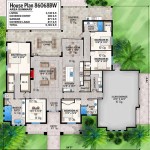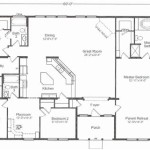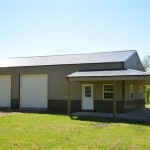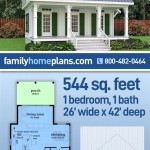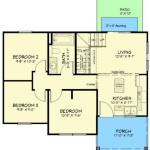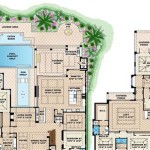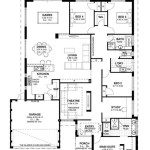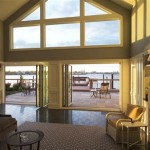Open Floor House Plans: A Guide to Design, Benefits, and Considerations
Open floor plans have become increasingly popular in modern residential architecture, largely due to their perceived ability to create a more spacious, connected, and versatile living environment. This design approach, characterized by minimal interior walls and a seamless transition between living spaces like the kitchen, dining area, and living room, offers a unique aesthetic and functional appeal. However, implementing an open floor plan requires careful consideration of various factors, including structural integrity, functionality, and personal lifestyle preferences.
This article explores the concept of open floor house plans, delving into their advantages, disadvantages, and critical design elements. We will examine how to effectively incorporate this design strategy and highlight potential pitfalls to avoid, ensuring a harmonious and functional living space.
Understanding the Core Principles of Open Floor Plans
The fundamental principle of an open floor plan is the elimination of traditional walled-off rooms. Instead of distinct, separate spaces for cooking, dining, and relaxing, these activities often occur within a single, expansive area. While completely open spaces are common, subtle divisions can be introduced through the strategic placement of furniture, changes in flooring, or the use of partial walls or architectural features like columns or arches. These subtle divisions help to define different zones within the larger space without sacrificing the overall sense of openness.
The visual continuity created by an open floor plan is a primary draw for many homeowners. The absence of walls allows natural light to permeate the entire space, contributing to a brighter and more inviting atmosphere. This design approach also facilitates social interaction, as family members or guests can easily communicate and participate in activities regardless of their location within the open area. This is particularly beneficial for families with young children or those who frequently entertain.
Open floor plans often create a sense of enhanced spaciousness, especially in smaller homes. By removing walls that compartmentalize the interior, the available square footage feels larger and more usable. This can be a significant advantage for homeowners who value a minimalist aesthetic or who are looking to maximize the perceived size of their living space.
Advantages of Open Floor Plan Designs
The advantages of open floor plans extend beyond aesthetics; they influence lifestyle, functionality, and overall home value. A well-designed open floor plan can significantly enhance the quality of life for its occupants.
Enhanced Social Interaction: Open floor plans naturally promote social interaction within the home. Family members can easily communicate and interact, even when engaged in different activities. This is particularly beneficial for parents who want to supervise children while cooking or for homeowners who enjoy entertaining guests. The seamless flow between spaces encourages conversation and a sense of togetherness.
Increased Natural Light: The absence of interior walls allows natural light to penetrate deeper into the home, creating a brighter and more inviting atmosphere. This can reduce the need for artificial lighting during the day, contributing to energy savings. A well-lit space can also have a positive impact on mood and overall well-being.
Flexible Living Space: Open floor plans offer greater flexibility in terms of furniture arrangement and space utilization. The large, adaptable area can be easily reconfigured to accommodate different activities or needs. This is particularly appealing to homeowners who value versatility and want the ability to adapt their living space to changing lifestyles.
Improved Air Circulation: With fewer walls obstructing airflow, open floor plans tend to have better air circulation compared to traditional layouts. This can contribute to a more comfortable and healthier indoor environment. Proper ventilation is essential for maintaining optimal indoor air quality and preventing the build-up of pollutants.
Potential for Increased Home Value: In many real estate markets, open floor plans are highly desirable, potentially increasing the resale value of a home. Buyers often appreciate the modern aesthetic, spacious feel, and social connectivity offered by these designs. However, the impact on home value can vary depending on location, market conditions, and the overall quality of the house.
Disadvantages and Considerations for Open Floor Plans
While open floor plans offer numerous benefits, they also present certain challenges that homeowners must carefully consider. Addressing these challenges ensures a functional and comfortable living environment.
Noise Control: One of the primary drawbacks of open floor plans is the potential for noise to travel easily throughout the space. Without walls to dampen sound, everyday activities like cooking, watching television, or conversations can create a cacophony that is disruptive and irritating. Effective noise control measures, such as the use of sound-absorbing materials, strategic furniture placement, and zoning, are essential for mitigating this issue.
Lack of Privacy: The open nature of the design can compromise privacy, especially when multiple people are occupying the space simultaneously. Without dedicated rooms for individual activities, it can be difficult to find a quiet place for work, relaxation, or personal conversations. Incorporating designated zones for different activities, such as a home office nook or a reading corner, can help address this issue.
Heating and Cooling Challenges: Maintaining consistent temperatures throughout an open floor plan can be challenging, particularly in homes with large windows or poor insulation. Heat can rise to upper levels, leaving lower levels feeling cooler, or drafts can occur in certain areas. Implementing effective HVAC systems and ensuring adequate insulation are crucial for maintaining comfortable temperatures throughout the home.
Smell Migration: Cooking odors can easily permeate an open floor plan, potentially affecting the entire living space. This can be particularly problematic for homeowners who are sensitive to smells or who frequently cook strong-smelling foods. Installing a high-quality range hood and ensuring proper ventilation can help mitigate this issue.
Structural Considerations: Removing interior walls, especially load-bearing walls, requires careful planning and structural modifications. A structural engineer must assess the existing structure and determine the necessary reinforcements to ensure the safety and stability of the building. This can add to the overall cost of the renovation or construction project.
:max_bytes(150000):strip_icc()/Stocksy_txp99a225edz7w000_Medium_3393630-9e70b44aa1af4113934d1a1e50534946.jpg)
Design Considerations for Successful Open Floor Plans
Achieving a successful open floor plan requires careful planning and attention to detail. Several design elements must be considered to create a functional, aesthetically pleasing, and comfortable living space.
Zoning and Defining Spaces: While the goal is to create an open and flowing space, it is important to define distinct zones for different activities. This can be achieved through the strategic placement of furniture, changes in flooring, or the use of partial walls or architectural features like columns or arches. For example, a large area rug can define the living room zone, while a kitchen island can separate the cooking area from the dining area.
Furniture Selection and Placement: Furniture plays a crucial role in defining the boundaries and flow of an open floor plan. Choose furniture that is appropriately sized for the space and that complements the overall design aesthetic. Consider using modular furniture or pieces that can be easily reconfigured to adapt to different needs. The arrangement of furniture should encourage conversation and interaction while also providing clear pathways for movement.
Lighting Design: Lighting is essential for creating a comfortable and visually appealing environment in an open floor plan. Incorporate a variety of lighting sources, including natural light, ambient lighting, task lighting, and accent lighting, to create depth and dimension. Consider using dimmers to adjust the lighting levels to suit different activities and moods. The placement of light fixtures should be carefully considered to avoid glare and shadows.
Acoustic Management: Addressing noise control is critical for creating a comfortable living environment in an open floor plan. Incorporate sound-absorbing materials, such as rugs, curtains, and upholstered furniture, to dampen sound. Consider using acoustic panels or other soundproofing measures in areas where noise is a particular concern, such as the kitchen or home office. Strategic furniture placement can also help to block sound.
Storage Solutions: Adequate storage is essential for maintaining a clutter-free and organized open floor plan. Incorporate built-in storage solutions, such as shelving units, cabinets, and drawers, to maximize space and minimize visual clutter. Consider using furniture with built-in storage, such as ottomans or coffee tables with drawers. Regularly decluttering and organizing the space is also important for maintaining a sense of order.

Material Selection and Consistency: Using a consistent color palette and materials throughout the open floor plan can create a sense of cohesion and visual harmony. Consider using similar flooring, wall colors, and furniture finishes to tie the different zones together. However, it is also important to introduce subtle variations to define the different areas and prevent the space from feeling monotonous. For example, you could use a different shade of the same color on the walls in the kitchen versus the living room.
Ventilation and Airflow: Ensuring proper ventilation and airflow is crucial for maintaining a comfortable and healthy indoor environment in an open floor plan. Install a high-quality HVAC system that is appropriately sized for the space. Consider using ceiling fans or stand-alone fans to circulate air and improve ventilation. Opening windows and doors can also help to bring fresh air into the home.
Scale and Proportion: Maintaining a sense of scale and proportion is essential for creating a visually appealing and functional open floor plan. Choose furniture and accessories that are appropriately sized for the space and that are proportionate to each other. Avoid overcrowding the space with too much furniture or accessories. Leave plenty of open space to allow for easy movement and to create a sense of spaciousness.
Open floor plans offer a unique opportunity to create a living space that is both functional and aesthetically pleasing. Careful planning, attention to detail, and a thorough understanding of the design principles are essential for achieving a successful outcome. By considering the advantages and disadvantages of open floor plans and implementing effective design strategies, homeowners can create a living environment that enhances their lifestyle and adds value to their home.

Modern Open Floor House Plans Blog Eplans Com
:max_bytes(150000):strip_icc()/1660-Union-Church-Rd-Watkinsville-Ga-Real-Estate-Photography-Mouve-Media-Web-9-77b64e3a6fde4361833f0234ba491e29.jpg?strip=all)
18 Open Floor House Plans Built For Entertaining

Classic House Plans Open Floor Concept

Free Editable Open Floor Plans Edrawmax

Open Floor Plans Build A Home With Smart Layout Blog Dreamhomesource Com
10 Small House Plans With Open Floor Blog Homeplans Com

Open Concept Ranch Floor Plans Houseplans Blog Com

250 Best Open Concept House Plans Ideas Small Floor

Hazelwood A Modern Three Bedroom House Plan With Den 1942

Ranch House Plans With Open Floor Blog Homeplans Com

